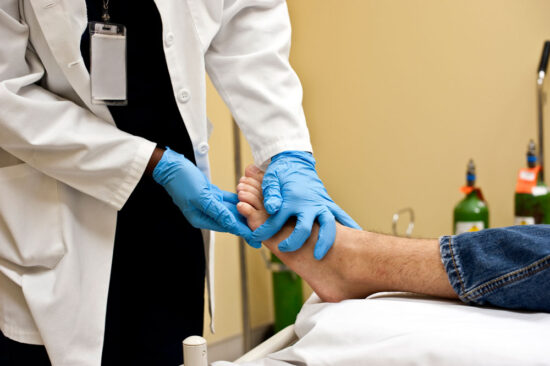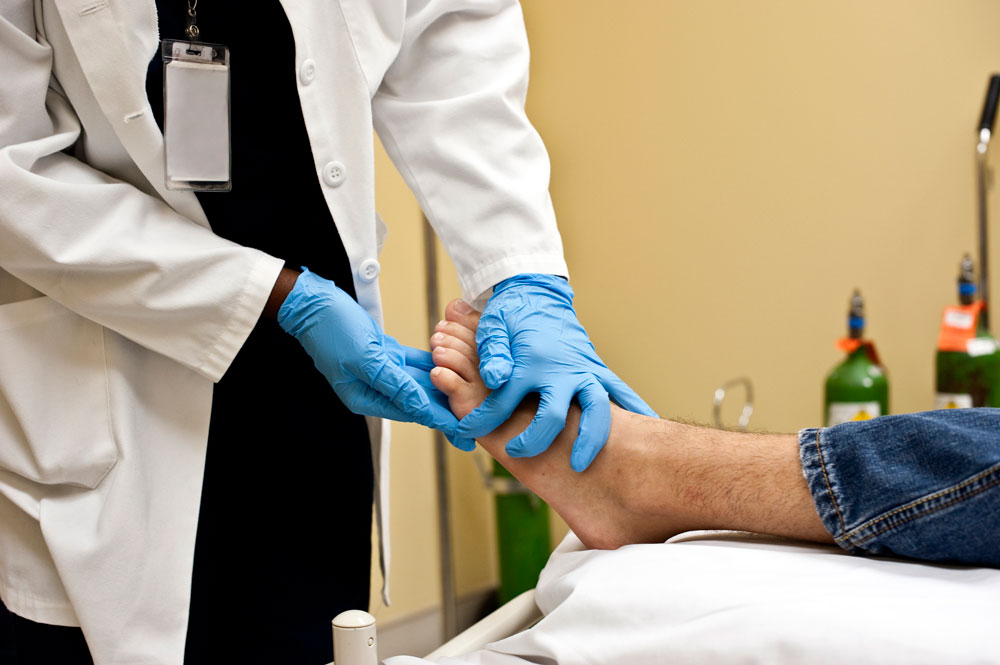 By Richard Blake, DPM
By Richard Blake, DPM
History of the Injury and the Patient’s Own Reason Why They Were Injured
There are so many types of injuries, but we have to start putting together a good picture of what happened and can it be prevented in the future. You can actually have a positive impact on all the different types of injuries, at least in the rehabilitation, by knowing the most you can. I will start this discussion with the mnemonic that always runs through my head when I am taking a history (also included in Chapter 17). Common Historical Questions:
- F – Pain frequency; are there important family history findings?
- A – Patient’s own assessment, what activities produce pain, what activities are okay?
- I – Pain intensity, is there a lot of inflammation?
- L – Pain location, how long does the pain last?
- E – What eases pain?
- D – What is the duration of pain?
- N – Does this problem feel like nerves, like numbness, etc?
- O – What are the events concerning the onset of pain?
- P – What produces the pain, past injuries involved?
- Q –W hat is the quality of the pain?
- R – Does the pain radiate, is there redness? Originally it was the result of what?
- S – How do shoes help or produce pain? Is there swelling? is there stiffness? Are there previous surgeries that may play a role?
- T – What treatments done? What treatments helped and hurt, any tingling?
- U – Does the patient have underlying problems?
- V – How does the pain vary?
- W – Has it affected work, is there weakness?
Most injuries are either acute (sudden onset of pain) or chronic (gradual buildup of pain). It is important with acute injuries to learn if there were circumstances that led to the injury, like generalized weakness from an illness leading to a fall. It could just be their 3rd or 4th ankle sprain with each one causing the ankle to get weaker and more unstable. The more you can make sense of the period surrounding the acute injury, the more you can help the patient rehabilitate fully and prevent the problem from occurring again.
I spend the most of my time dealing with either acute injuries from overuse (like a Jones fracture secondary to 10 days of basketball in 12 days), or just straight overuse where the weakest link in the chain starts complaining. Acute injury from overuse is where the athlete was overdoing activities and finally something (like a tear in the plantar fascia) started complaining. The patient can tell you exactly when they felt pain that has not gone away. Straight overuse typically presents as a gradual onset of pain that slowly worsens over time until it finally forces the patient to accept some restriction in activities and start some treatment. This is where an understanding of the weakest link in the chain concept is important. When we overdo activities, and our bodies start complaining in an area, something is making that area a weak link. Our job is to find out why.
Practical Biomechanics Question #53:
In a busy medical practice, an extensive history is normally done by a pre-visit questionnaire, with the provider glancing at the answers before delving more deeply with their own questions. In our mnemonic, what does the letter “F” stand for?
Richard Blake, DPM, MS, is adjunct faculty at the California School of Podiatric Medicine. He has practiced podiatry at the Sports and Orthopedic Institute of St. Francis Memorial Hospital in San Francisco, CA. His book, Practical Biomechanics for the Podiatrist, Book 1, is available from Amazon.com and Barnesandnoble.com, as well as from the publisher at bookbaby.com.






